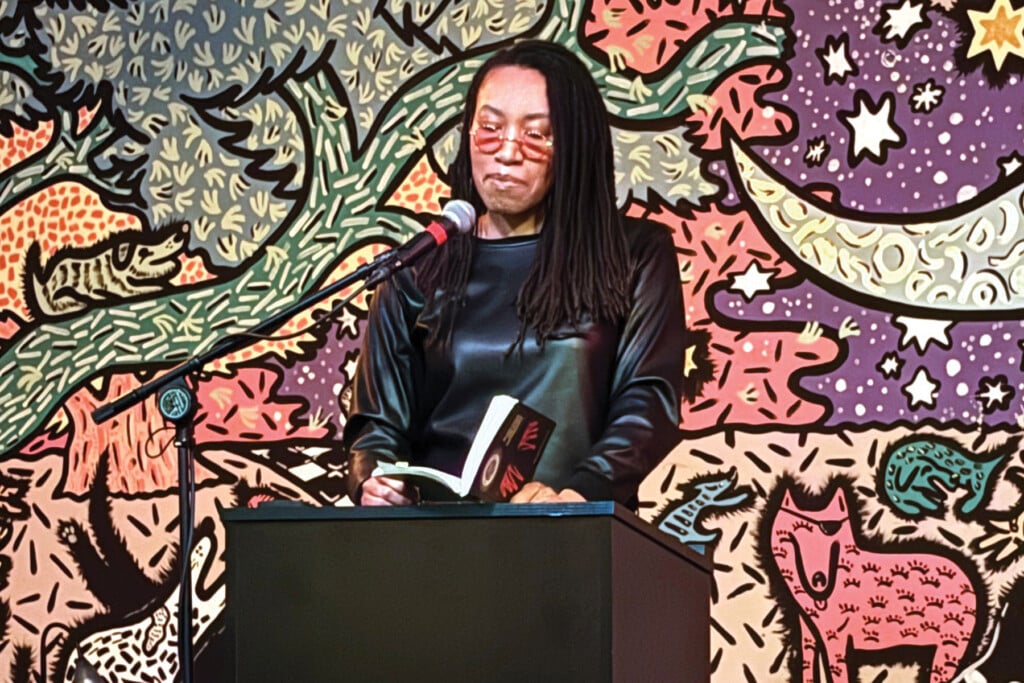To Kill a Wild Thing
At Midtown Reader, banned books abound

I was scrolling through TikTok the other night when I encountered a video of someone pretending to be arrested for owning and reading a banned book. It was met with mixed reactions.
Some thought it was funny. Others applauded the creator for standing firm in his convictions. But a handful of commenters were appalled, asking questions like, “Do you really think it’s illegal to own banned books?” One scroll through social media suggests it’s a fairly common belief; however, it’s not exclusive to young, online communities.
Kristin Kehl, manager of Midtown Reader, said she and her staff regularly educate locals about banned books.
“We had a big Banned Book Fair last year, and we had a lot of people ask, ‘What does it mean to say this book is banned?’ And we always like to start our conversations by defining what we mean by a ‘banned book,’” Kehl said. “The American Library Association (ALA) states that a banned book is a book that has been challenged (and removed) for objectionable content in a school district.
“No one is saying you can’t come to our store and buy the book,” Kehl said.
On the contrary, countless literary and free speech organizations encourage people to buy banned books. Midtown Reader has a whole display devoted to them.
Located in the store’s Special Reads section, the two-shelf array features popular banned titles, from classics like Harper Lee’s To Kill a Mockingbird to contemporary books such as Maia Kobabe’s Gender Queer: A Memoir. The display also contains “shelf talkers,” or handwritten tags explaining why each book was banned.
“We want to represent the different types of books being banned,” Kehl said. “Because it’s not just books about a certain subject or by a certain author. It’s all types of books, and that’s the problem.”
Reasons listed on the shelf talkers, Kehl said, often surprise shoppers. One title that typically shocks folks is Maurice Sendak’s Where the Wild Things Are.

↑ CHALLENGED FOR: Witchcraft/supernatural elements. Photo by Saige Roberts,
The popular children’s book follows a mischievous young boy named Max who, after being sent to his room without dinner, escapes to an imaginary land filled with wild things. According to PEN America, the book has been challenged, predominantly in the South, because it contains “witchcraft/supernatural elements.” Other notable works banned for the same elements include Katherine Paterson’s Bridge to Terabithia and J.K. Rowling’s Harry Potter series.
Thousands of books have been challenged and/or banned over the years. Reasons include violence, offensive language, “anti-family” content and “satanic” themes, among others. In 2023 alone, over 4,200 titles were challenged in schools and libraries, a 65% increase from 2022. Of those targeted, 47% represented the voices and lived experiences of people of color and the LGBTQ+ community, the ALA reported.
Kehl understands why some banned titles might concern parents. But she encourages them to read these books for themselves before making any snap judgments.
“A lot of people will hear about a particular book and think there are certain types of content in it, but once they read it, they realize it’s different than what they originally imagined,” Kehl said. “So, reading books and deciding for yourself is the biggest thing.
“We’re not saying every book should be available for every child because every child is different and every family is different. Racial content or sexual orientation or gender content may not be appropriate for some children, but they may be vital for others, so having the option and the opportunity is the important thing here.”
According to PEN America, public school book bans increased by 33% in the 2022–23 school year compared to the 2021–22 school year. Many of those banned were “specifically written and selected for younger audiences,” i.e. young adult books, middle-grade books, picture books, etc.
Banned Books Week

Photo by Saige Roberts
In 1982, in response to increased book banning, the American Library Association established Banned Books Week. The awareness campaign “highlights the value of free and open access to information” and brings together the entire literary community. This year’s campaign, “Freed Between the Lines,” will take place from Sept. 22–28.
To celebrate, Midtown Reader will host a Banned and Boozy Book Fair on Sept. 27 from 6–8 p.m. For more information, visit MidtownReader.com.
A Few Banned Books

↑ Challenged for: Racial slurs and its perception of the Black experience

↑ Challenged for: Witchcraft/supernatural elements

↑ Challenged for: Witchcraft/supernatural elements

↑ Challenged for: LGBTQIA+ content, claimed to be sexually explicit
Book cover images by iStock / Getty Images Plus: Derevyankina
Information sourced from ALA and Pen America


